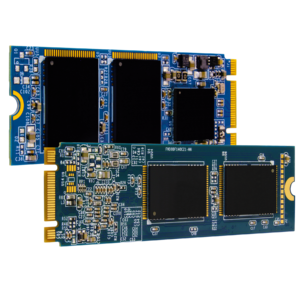What Is a NAND Technology SSD?
In years past, the only drive industrial users and consumers wanted to see in their devices was a hard disk drive, or HDD. Today, you would be hard pressed to find an industrial application that doesn’t feature a solid state drive, or SSD. SSDs were initially considered too expensive for wide use when they were introduced to the market, but now, they are a standard choice for reliable storage. A major reason why SSDs are so popular is NAND technology SSD. NAND is an alternative to DRAM, which was previously used in SSDs. NAND is more affordable and doesn’t require a continuous supply of power like DRAM. What exactly is a NAND technology SSD? Here is what you need to know.
Two Types of NAND
NAND, or NAND flash, comes in multiple formats, but the two that are most popular are SLC and MLC. SLC stands for single-level cell, and it is the kind of flash found in industrial NAND technology SSDs. With SLC, one bit of data is stored on each cell in the drive. For industrial users, this distinction is important, because it reduces the risk of errors in data storage, and it provides the fastest possible operating speeds.
MLC stands for multi-level cell. With this kind of NAND flash, two bits of data are stored per cell. Allowing two bits of data to be on each cell means that the device can have more storage capacity in the same amount of space as a comparable SLC NAND SSD. However, storing two bits of data increases the risk of an error and slows down the speed of operations. For this reason, you will generally find MLC NAND flash technology used in consumer grade devices.
NAND Technology Lifespan
Unlike DRAM storage, a NAND technology SSD will wear out over time, because NAND cells have a finite number of write cycles. Note that read cycles do not contribute wear to the SSD. SLC has a longer lifespan than MLC flash. The lifespan of SLC NAND technology is long enough to make it a worthwhile choice for most OEMs and engineers.
NAND technology SSDs also come with integrated features that make it easier to manage lifespan concerns. One is a technology called wear leveling, which ensures that the storage is used as efficiently as possible. The other is called SMART. This technology monitors the operations of the drive and alerts users to internal errors that could indicate that the drive is reaching the end of its useful life. OEMs and engineers can then plan for any necessary transition to minimize interruptions.
Do you have questions about NAND technology SSDs? Delkin’s technical team is here to help. Reach out to us today to learn more or to request a sample.
 Login
Login Register
Register












